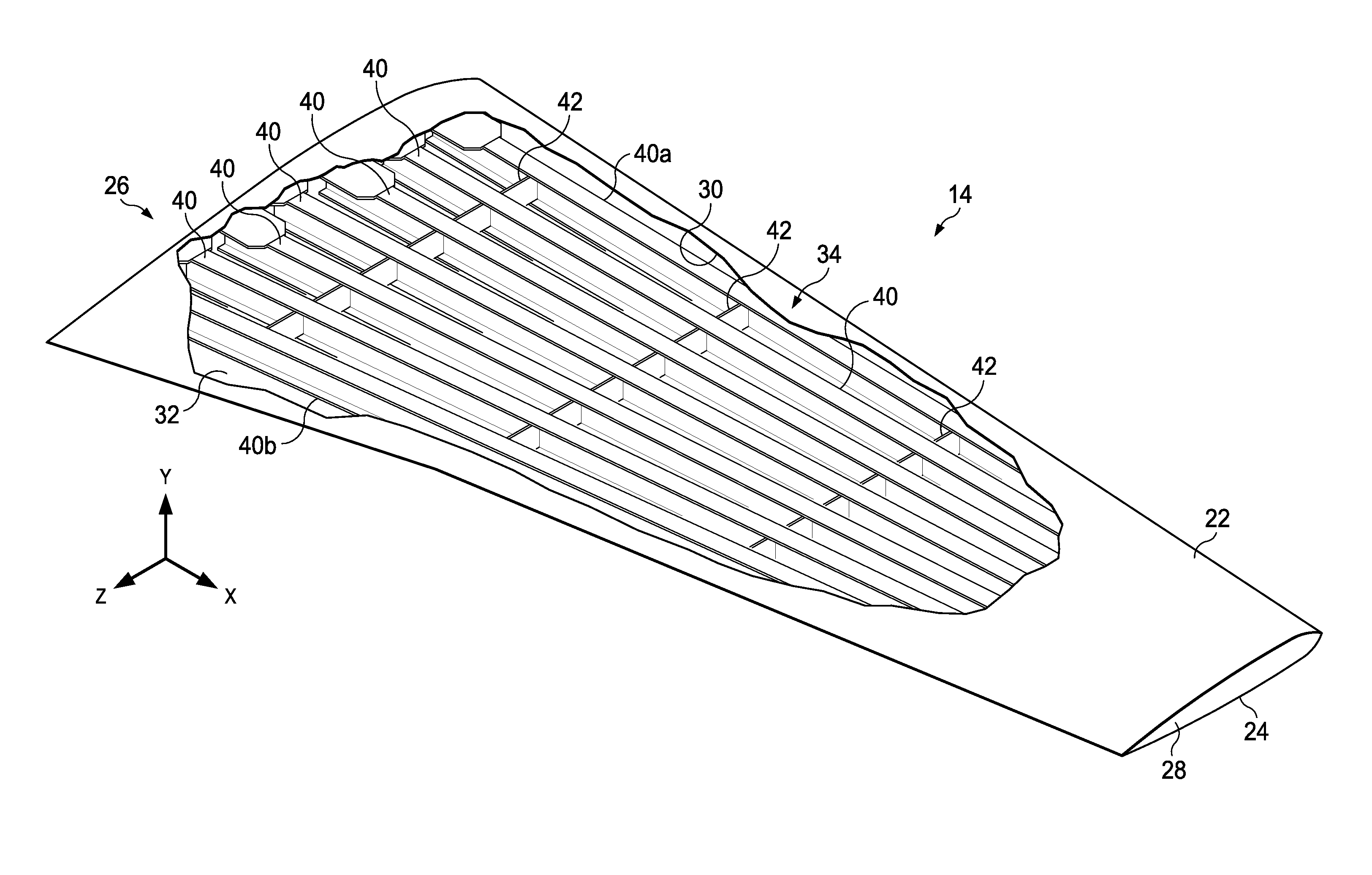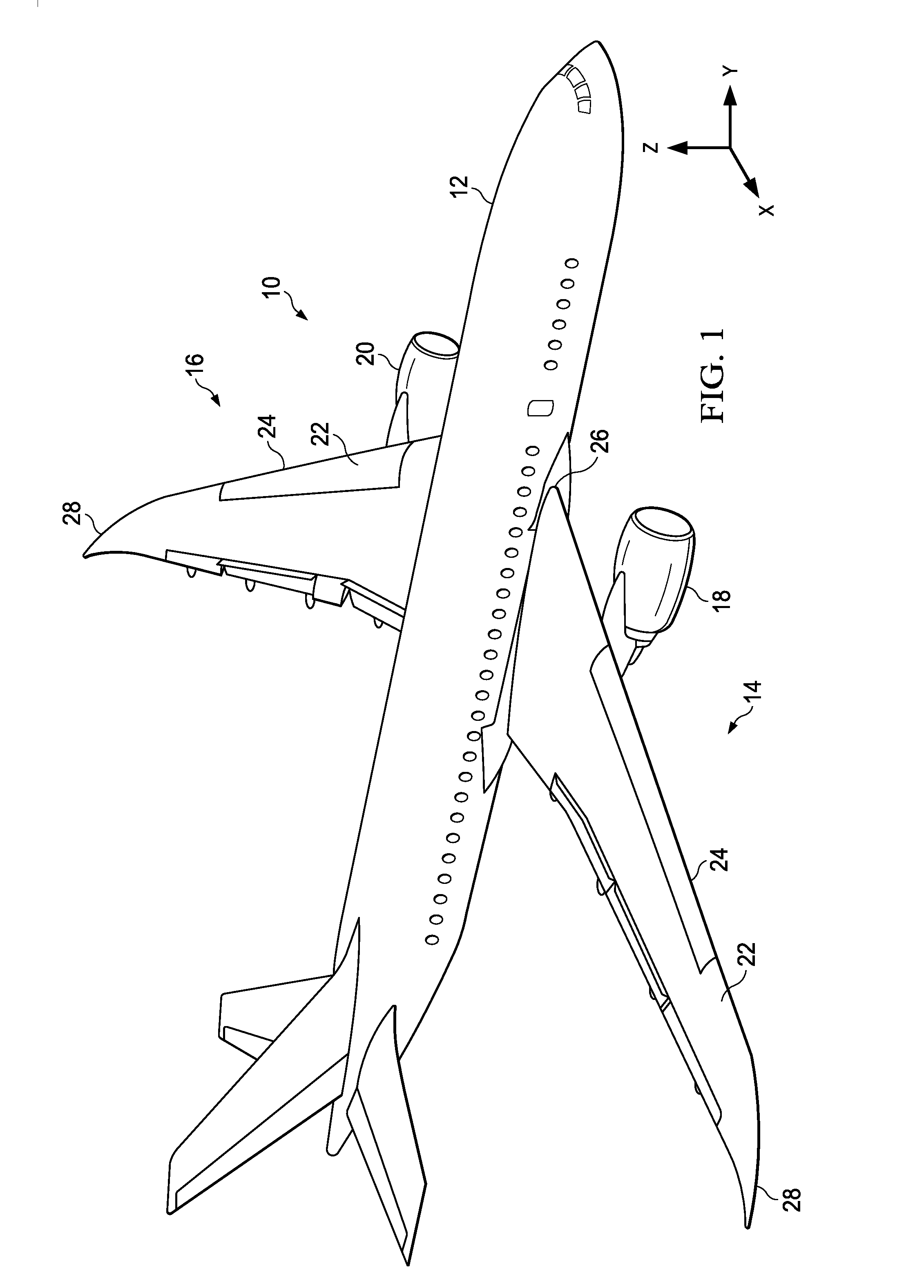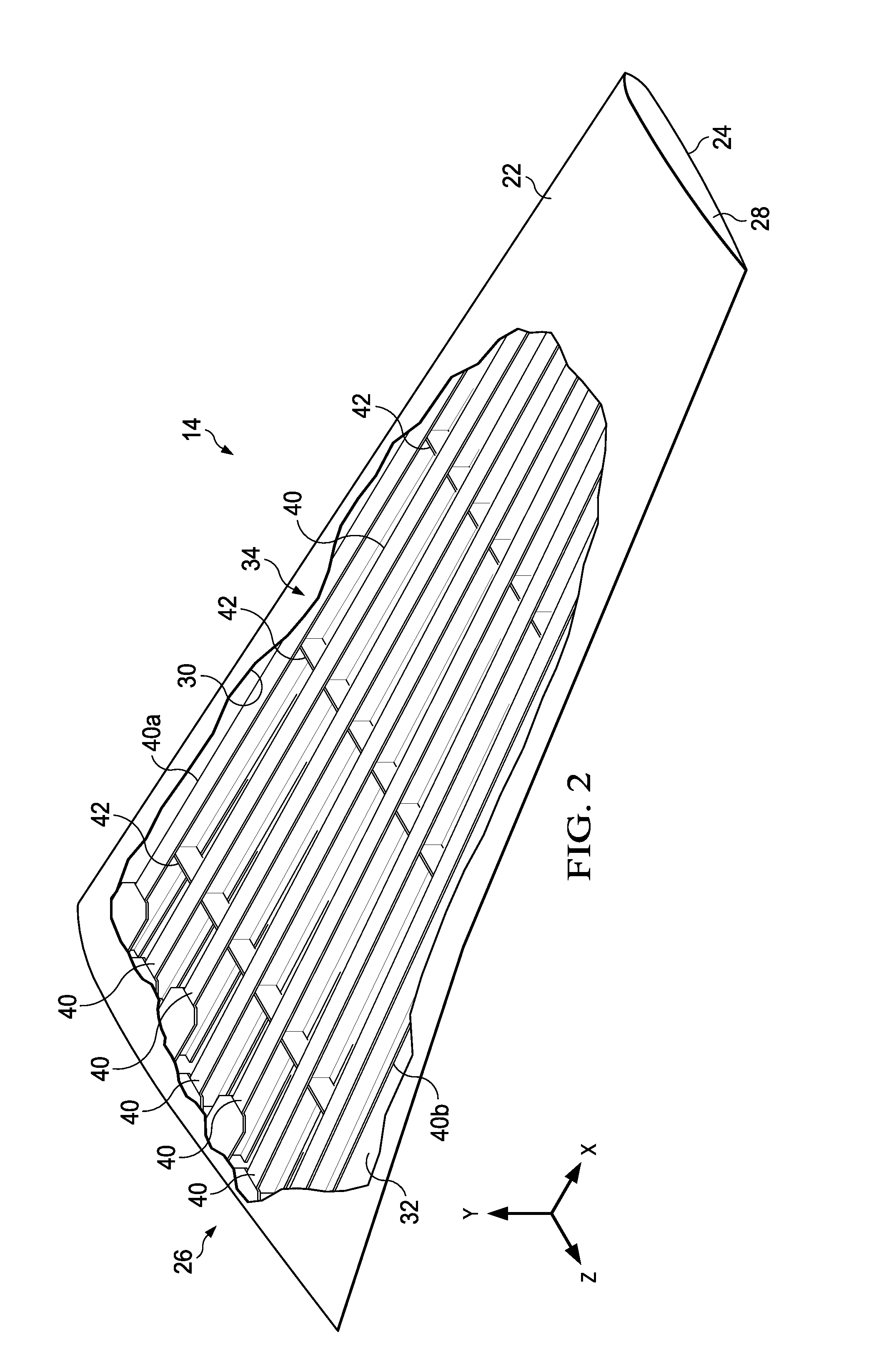Bonded Composite Aircraft Wing
- Summary
- Abstract
- Description
- Claims
- Application Information
AI Technical Summary
Benefits of technology
Problems solved by technology
Method used
Image
Examples
Embodiment Construction
[0031]The embodiments of the aircraft wing structure described below utilize wing skin-grid differential features to improve wing-fuselage structural performance, and reduce manufacturing costs through lighter weight bonded designs. The disclosed wing structure may also reduce part count, may reduce or eliminate corrosion and may provide a higher structural margin of safety. The bonded aircraft wing structure exhibits increased wing design efficiency, is extremely light weight and provides fuel savings, while reducing or eliminates the need for fasteners to fasten the wing skins to the inner wing-grid and the spars. The wing structure has the ability to contain discrete damage, such as that caused by engine explosion.
[0032]In one exemplary embodiment, the bonded composite aircraft wing may include a composite inner wing-grid structure (hereinafter sometimes referred to as a wing-grid or wing-grid structure), and upper and lower composite wing skins that may be specifically tailored ...
PUM
| Property | Measurement | Unit |
|---|---|---|
| Angle | aaaaa | aaaaa |
| Fracture toughness | aaaaa | aaaaa |
| Diameter | aaaaa | aaaaa |
Abstract
Description
Claims
Application Information
 Login to View More
Login to View More - R&D
- Intellectual Property
- Life Sciences
- Materials
- Tech Scout
- Unparalleled Data Quality
- Higher Quality Content
- 60% Fewer Hallucinations
Browse by: Latest US Patents, China's latest patents, Technical Efficacy Thesaurus, Application Domain, Technology Topic, Popular Technical Reports.
© 2025 PatSnap. All rights reserved.Legal|Privacy policy|Modern Slavery Act Transparency Statement|Sitemap|About US| Contact US: help@patsnap.com



